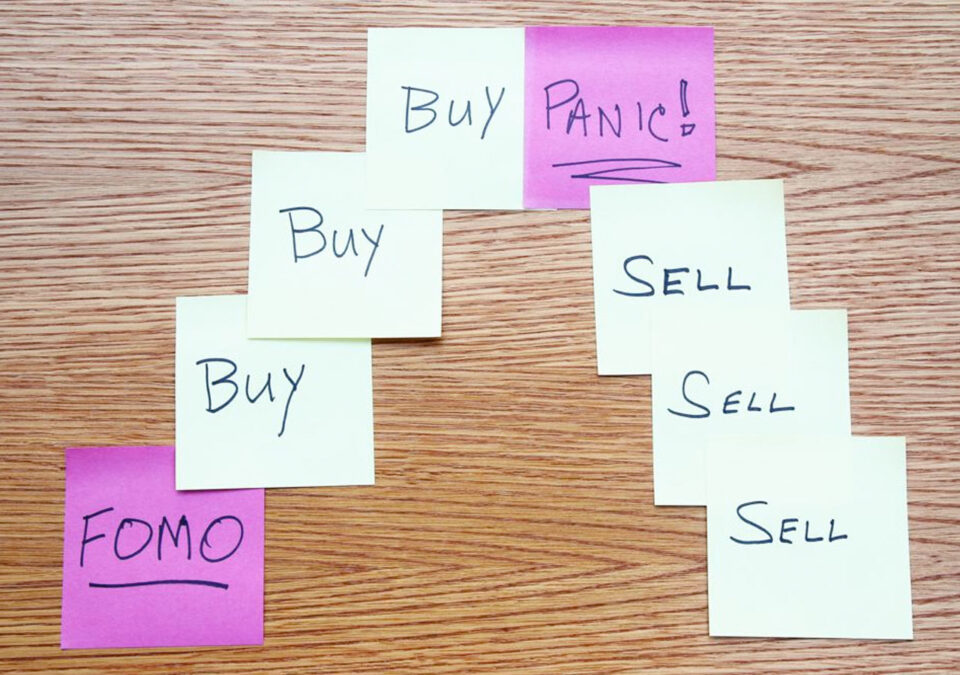Of the 51 years I’ve been on this planet, 1999 in particular sticks out. We had our first child, Y2K was coming to a boil, and the dot-com bubble was on the verge of bursting. An indicator that internet companies were in a frenzy was that seventeen of them, most of which were unprofitable, purchased expensive ads for the 2000 Super Bowl (as compared to just three internet companies buying those ads a year later). Seemingly everyone was talking about the money they were making in technology stocks. Companies with no earnings but dot-com in their name were skyrocketing in value. Stay-at-home parents were day-trading, and people with no investment expertise were exchanging stock picks with each other at restaurants and family gatherings. People spoke of the “new economy,” in which unprofitable companies supposedly could be valuable because the new economic currency was clicks and networks, not earnings.
At the time, my co-workers and I struggled to help our clients stay disciplined. We urged them not to get caught up in the euphoria surrounding tech stocks and to re-allocate to bonds and value stocks as their investment strategy dictated. It was a tough sell. Some of our clients were unimpressed by our advice and envious of the tremendous gains their friends and acquaintances were enjoying as they plowed into tech stocks.
Of course, we all know how the story ended: the market continued its climb into 2000, peaked in March, and declined 49% over the following two-plus years. Growth and tech stocks declined precipitously, with the Nasdaq falling 77% from 5,048 to 1,139. It didn’t recover its peak until April 2015, 15 years later.
In retrospect, the dot-com bust was inevitable. How could the values of companies with no earnings rocket past established, profitable ones? Sure, some companies like Amazon didn’t have profits because they continually reinvested in growth. But the vast majority of the unprofitable high-flyers were just vastly overvalued in the general speculative frenzy of the late 1990s.
The Hardest Times to Be an Investor
Good behavior is the most critical ingredient of successful investing. It comprises sticking with a long-term strategy and not getting caught up in fear or greed.
Being disciplined is hardest at market tops and bottoms. Near the bottom, fear is all-consuming. Worries that the market will fall further, combined with seeing your portfolio plummet in value, make staying in or buying more stocks challenging. But investing near market tops is challenging as well, as greed takes hold. You kick yourself for not having invested in some of the top stocks or sectors before they took off. You want to buy those hot investments to benefit from further gains but worry that you have missed the run-up.
Our Current Situation
There is a story that John D. Rockefeller sold out of the stock market just before the 1929 crash after hearing stock tips from his shoeshine boy. Tips from an unsophisticated investor signaled to him that the market was overheated and due for a bust. Whether or not this story is true, it highlights an important point; when it seems everyone is talking about the money they are making in the market and exchanging stock tips like recipes, the market is probably overvalued.
Over the past few months, I have seen this happening. Here are a few examples from just the past two weeks:
- My 18-year-old daughter showed me a group chat where people in her dorm were bragging about the money they had made in GameStop, AMC, and Dogecoin (a cryptocurrency), and were trading stock tips about what the next hot investments would be. Some of her friends had made more than 150% on their investments in a matter of days.
- A 20-year-old family member who works in retail has recently opened a Robinhood account and asked me for stock tips. She doesn’t even have a savings account.
- A 22-year-old family member facetimed me last week to share how much money he’s made in shares of companies involved with electric vehicles (hundreds of percent!).
- People on my social media feeds, who seemingly have no idea how Bitcoin is mined, how blockchain works, or who Satoshi Nakamoto is, brag about the gains they’ve made by having the foresight and investment acumen to buy Bitcoin.
These stories, which are reminiscent of the dot-com bubble (or even the Dutch Tulip Craze of the 1600s), aren’t the only warning signal. Market fundamentals are also flashing red. The impressive stock market returns over the past decade have partially reflected corporate earnings growth, but a good portion of the gains have been the result of stocks becoming more expensive. One of the key metrics of relative expensiveness is the Shiller Price-to-Earnings ratio (also known as the CAPE). It currently sits at an eye-popping 35.8 times earnings, 50% above its long-term average and second only to the peak it reached during the dot-com boom. The market is expensive.
Does All This Mean the Market About to Crash?
Do the run-up in the market, high price-to-earnings ratios, and stories of retail investors plowing into the market signal that a crash is imminent? No. While bear markets are inevitable, it is impossible to forecast the top reliably. The next bear market might start tomorrow or years from now. Anybody that says they know when we are at the top is merely guessing.
A case-in-point is Alan Greenspan’s warning to investors of “irrational exuberance” in the stock market. While he was eventually proven correct, the S&P 500 more than doubled between his warning in 1996 and its top in March 2000 and the tech-laden Nasdaq gained nearly 300% during that period.
A truism of investing is that the market often continues its trajectory longer than anticipated on both the upside and the downside. There is no reliable signal of when the market is hitting an inflection point. Even the Shiller PE, the most predictive metric of future stock market returns, only explains about 40% of the variation of market returns over ten-year periods and provides no reliable guidance to short-term returns.
What to Do
It is human nature to regret missing out on a good thing. It’s difficult to hear of other investors making hundreds or even thousands of percent returns in short periods of time with investments you missed out on. This fear of missing out (or FOMO) can be overpowering. But resisting FOMO is vital to good investing behavior. It is completely aligned with Warren Buffett’s advice to “be greedy when others are fearful, and fearful when others are greedy.”
But you don’t need to do nothing. Instead of following the crowd, rebalance by taking gains from your high-flyers and adding to value stocks, international stocks, and non-correlated assets that have been laggards.
Don’t try to time the market by cashing out, but don’t follow the crowd and pile into the investment trend of the day either. Adopt a long-term perspective and stick with your investment strategy. Great investors ignore the noise and stay focused on their long-term goals. This may not be as much fun as day-trading GameStop or cryptocurrencies, but history teaches us you’ll be better off.



